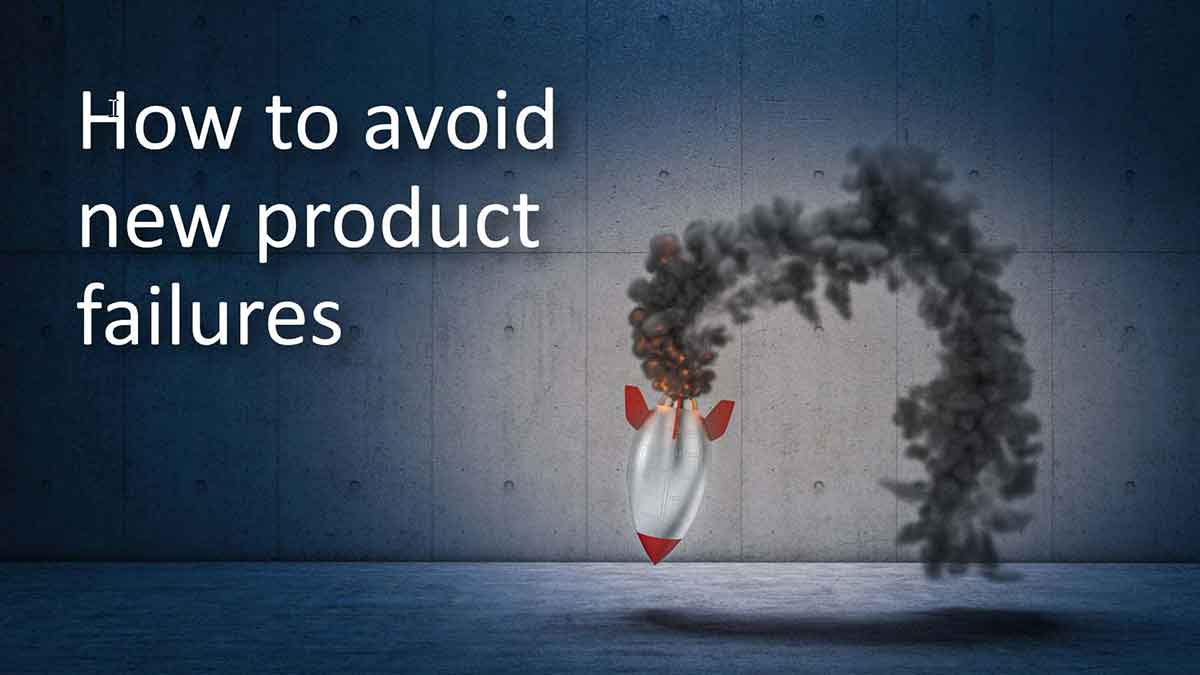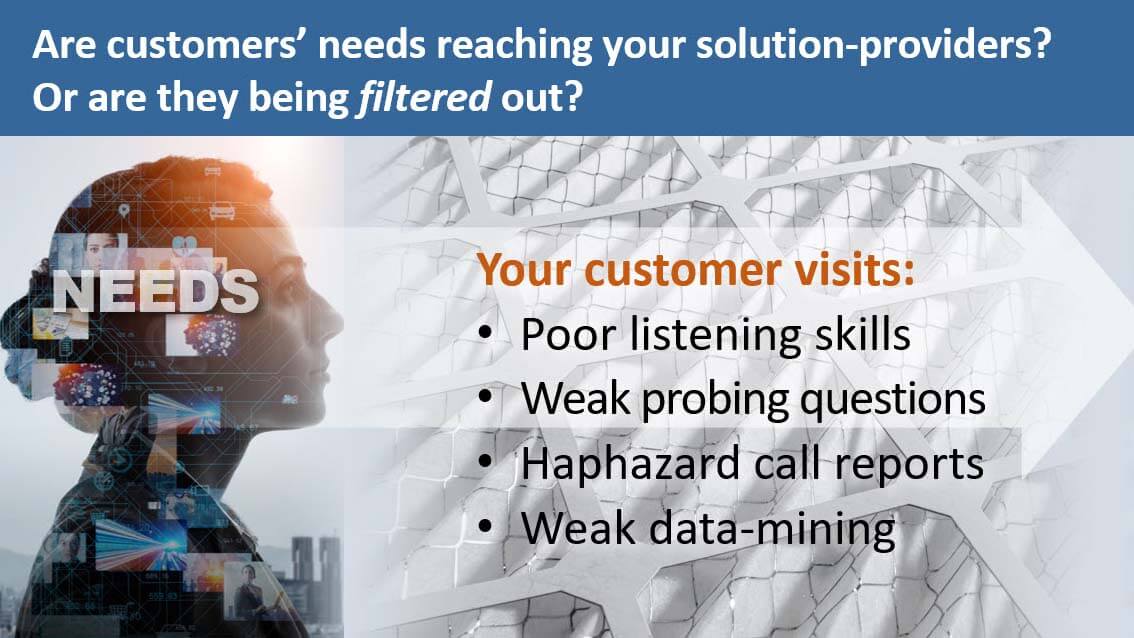Initially, you are aware of the first three, but completely unaware of the fourth—surprises. When you begin your project, list the first three, and try to convert A’s and Q’s into F’s. Then uncover the surprises through customer interviews, tours and observation. Seek to understand the first three, and discover the last one.
More in white paper, Innovating in Unfamiliar Markets (page 12)
You shift resources “up” by investing manpower earlier in understanding market needs. This lets you be more successful later in developing solutions. You shift resources “out” when employees spend less time talking to each other… and more time directly engaging customers, through interviews and tours. Develop new skills for this, and create a new company culture.
More in white paper, www.catchtheinnovationwave.com (page 6)
Your sales force should play a key role in innovation-focused interviews. But not by themselves. Unaccompanied sales reps seldom attract all the right customer contacts, and they’re not rewarded for the lengthy time horizons required. Besides, market-facing innovation requires central coordination, since a single sales territory won’t contain all the needed prospects. However, your sales force can play a critical role when it also becomes a learning force.
More in 2-minute video at 47. Make your sales force a learning force
If the customer felt they helped you with your interview, you probably wasted your airfare. But if they felt it was their interview, asked for a copy of the notes, and said you were a good meeting facilitator… you probably learned things your competitors don’t know. B2B insight skills are needed for this. Do your people have them?
More in e-book, www.reinventingvocforb2b.com (page 9)
Want to add employees who know your technologies and markets, can start work tomorrow, and cost nothing more? It’s easy: Just kill the dead-end projects that tie up half your resources. Free your people to work on projects your customers actually care about. It’s not hard to learn which projects to kill. In fact, strong project teams will halt weak projects on their own. Many will do this using the data-driven evidence that comes from market satisfaction gaps.
More in white paper, www.marketsatisfactiongaps.com
If your new product development process starts with your ideas—instead of B2B customers’ desired outcomes—your new product may be an answer to the wrong question(s). You’ll likely a) miss important customer outcomes, or b) misinterpret the importance of the customer outcomes you have identified.
More in white paper, www.guessingatcustomerneeds.com
If all customer outcomes in a market are either unimportant or already satisfied, you’ll see low Market Satisfaction Gaps. This is an over-served market, and there’s only one thing that makes these customers happy: Dropping your price. Race to more attractive markets and hope your competitors waste resources here. Have you identified your over-served markets yet?
More in white paper, www.marketsatisfactiongaps.com
Market segmentation is covered in every business curriculum, and for good reason. The best of the best, in every craft, maintain a focus on fundamentals. Consider that the great Tiger Woods continues to perfect his golf swing even as he approaches the end of his career. For innovation, few concepts are as fundamental as market ... Read More
Where else do you invest tens of millions of dollars in personnel, so that many can work diligently on answers to the wrong questions? If your firm is like most, one-half of your product development resources are working on projects that will be cancelled or fail to yield an adequate return. You can stop this innovation malpractice with the science of B2B customer insight. Specifically, you must stop projects from entering the development stage unless you have data-driven evidence of customer needs.
More in 2-minute video at 35. Insist on data-driven innovation
In concentrated B2B markets, the top ten buying accounts may represent 50-100% of the buying potential. Unlike B2C—with deep pools of potential prototype testers—B2B suppliers can wear out their welcome by lobbing sloppy “minimum viable products.” If you use Lean Startup, be sure to begin with proper B2B customer interviews.
More in white paper, www.leanstartupforb2b.com (page 7)
Tired of new product failures? Get one simple step right and your new product success rates will soar. For B2B companies, this step is prioritizing customers’ needs. Not sure about that? We’ll show you strong evidence that supports this… and show you how to turn new product failures into rare and distant memories. What’s more ... Read More
Years from now, we’ll think it quite strange that B2B companies explored market needs by launching products to see if anyone would buy them. In the future, B2B companies will have a complete understanding of market needs before they begin developing their products, let alone launch them. Want to start before your competitors?
More in white paper, www.b2btimingiseverything.com (page 5)
It’s natural to ruminate on the future; in particular, about technology adoption. What changes will future technology waves bring? Will we ride them to riches or drown under the weight of disruption? A Danish proverb warns that “Prediction is dangerous, especially about the future.” A cycle of bad logic Unfortunately, when we theorize, we can ... Read More
Every one of your B2B customers has needs… problems to be solved. What’s filtering them out, preventing your solution providers from understanding them? 1) Poor listening skills when your employees meet with them? 2) Few probing questions? 3) Haphazard call reports? 4) Weak CRM datamining? You can change all this when your customer-facing employees use Everyday VOC.
More in Everyday VOC white paper, www.EVOCpaper.com













